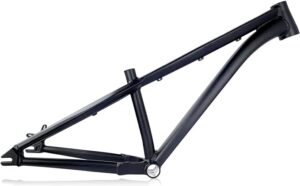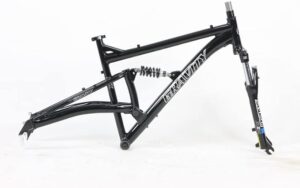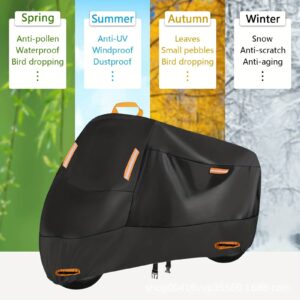Arthritis can be a debilitating condition, particularly affecting the knees and making everyday activities challenging. However, cycling can be an excellent low-impact exercise that helps maintain joint flexibility and overall health. Finding the best bike for arthritic knees involves considering various factors to ensure comfort, reduce pain, and enhance mobility.
Understanding the Needs of Arthritic Knees
Before diving into specific bike recommendations, it is crucial to understand the unique needs of individuals with arthritic knees. Arthritis in the knees often results in pain, stiffness, and reduced range of motion. Therefore, the bike should provide sufficient support, minimize stress on the knees, and allow for smooth, low-impact pedaling. Comfort and ease of use are paramount to encourage regular cycling without exacerbating knee pain.
Key Features to Look For in a Bike
Comfortable Seating
One of the most critical features for a bike designed for arthritic knees is a comfortable seat. Look for a bike with a well-padded, wide seat that offers ample support. A seat with adjustable height and angle can help achieve the optimal position, reducing strain on the knees and enhancing overall comfort. Some bikes also offer seats with built-in suspension systems to absorb shocks and vibrations from rough terrain, further protecting sensitive joints.
Step-Through Frame
A step-through frame design is beneficial for individuals with limited mobility and flexibility. This type of frame allows for easy mounting and dismounting, reducing the risk of injury and making the cycling experience more accessible. Traditional bike frames with high top tubes can be challenging to navigate, particularly for those with knee pain, so opting for a step-through frame can significantly enhance ease of use.
Low Gear Ratios
Bikes with low gear ratios are ideal for those with arthritic knees as they require less effort to pedal, especially on inclines. Low gears enable cyclists to maintain a steady, comfortable pace without putting excessive pressure on the knees. When selecting a bike, ensure it has a wide range of gears, including lower options, to accommodate different terrains and levels of exertion.
Electric Assist Options
Electric bikes, or e-bikes, are an excellent choice for individuals with arthritis. E-bikes come equipped with a motor that provides assistance while pedaling, reducing the physical effort required. This assistance can be particularly beneficial on hilly terrain or longer rides, helping to preserve knee health while still enjoying the benefits of cycling. Look for e-bikes with adjustable levels of assistance to tailor the experience to individual needs.
Adjustable Handlebars
Adjustable handlebars are essential for finding a comfortable riding position that does not strain the knees. Handlebars that can be raised or lowered allow for customization of the bike’s geometry, promoting an upright posture that reduces pressure on the knees and lower back. Ergonomic grips and handlebar designs can also enhance comfort and control, making the bike more user-friendly for individuals with arthritis.
Lightweight Frame
A lightweight frame can make a significant difference in the ease of handling and maneuvering the bike. Aluminum or carbon fiber frames are lighter than traditional steel frames, making them easier to ride and transport. A lighter bike requires less effort to pedal and control, which can be particularly advantageous for those with weakened or painful knees.
Additional Tips for Comfortable Cycling
Proper Bike Fit
Ensuring the bike fits properly is crucial for reducing knee pain and enhancing the overall cycling experience. A professional bike fitting can help determine the optimal seat height, handlebar position, and pedal alignment to suit individual needs. Investing in a proper bike fit can prevent strain and discomfort, making cycling more enjoyable and sustainable.
Regular Maintenance
Regular maintenance is essential for keeping the bike in good working condition. Ensure that the gears, brakes, and suspension systems are well-maintained to provide a smooth and safe ride. Properly inflated tires and lubricated chains also contribute to the bike’s overall performance and comfort.
Gradual Progression
If you are new to cycling or returning after a long hiatus, it is important to start slowly and gradually increase the intensity and duration of your rides. Begin with short, flat rides and gradually incorporate more challenging routes as your strength and confidence improve. Listening to your body and avoiding overexertion will help prevent knee pain and promote long-term cycling enjoyment.
Consult a Healthcare Professional
Before starting any new exercise regimen, including cycling, it is advisable to consult a healthcare professional, particularly if you have arthritis or other underlying health conditions. A doctor or physical therapist can provide personalized recommendations and ensure that cycling is a safe and effective activity for managing your arthritis.
Cycling can be a wonderful way to stay active and manage arthritis symptoms, but finding the right bike is essential for maximizing comfort and minimizing pain. By considering features such as comfortable seating, step-through frames, low gear ratios, electric assist options, adjustable handlebars, and lightweight frames, individuals with arthritic knees can enjoy the many benefits of cycling. Proper bike fit, regular maintenance, gradual progression, and consulting healthcare professionals are additional steps that can enhance the cycling experience. With the right bike and approach, cycling can become a sustainable and enjoyable activity for those with arthritis, promoting better health and well-being.







